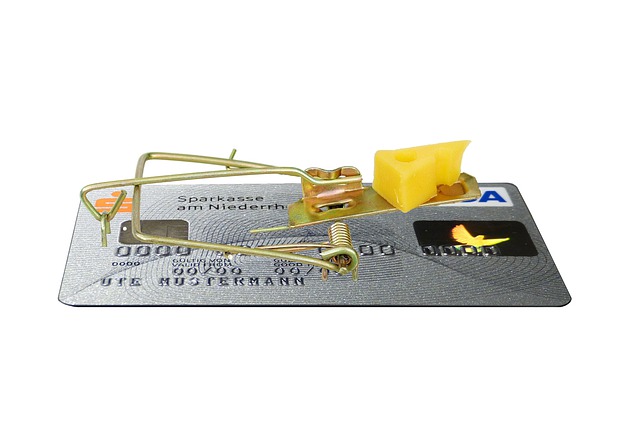How To Choose A High Risk Payment Processor For Your Shopify Store?
Last Updated | January 16, 2024
Table of Contents
According to recent data, customers prefer to use debit cards, credit cards, and online payment services—all of which call for payment processors—to make purchases. Making it as quick and simple as possible for clients to pay you is the one priority of payment providers. However, not all payment processors are made equal. Especially when a good Shopify-theme-development company is hired for your Shopify store.
Choosing appropriate high-risk payment processors for Shopify is crucial as a result. However, a lot of retail shop owners are confused about the kind of payment processor that will enable them to cut costs and boost sales.
Learn More: How Do You Get Paid From Shopify
Everything a retailer wishes to learn about high risk payment processors Shopify, the benefits and more are covered in this article.
But before we move on to our actual topic let us answer two basic questions first;
What is a high-risk order on Shopify?
Any order that the cardholder has not authorized is considered a high-risk Shopify order. Orders placed using credit/debit cards that have been lost, stolen, forged, or counterfeit might be considered high-risk or fraudulent transactions.
Who is Shopify’s payment processor?
Due to a collaboration with Stripe (which handles the back-end processing), Shopify Payments is now accessible in addition to about 100 more third-party gateways (such as PayPal).
What Are Shopify’s High-Risk Payment Processors And Why Do Businesses Need Them
A high-risk merchant account denotes that your payment processor has rated the risk of fraud or chargebacks as being higher for your company. Higher processing fees are charged to high-risk merchant accounts to make up for the added risk that the payment processor is carrying.
Upon receiving payment information from the gateway, high risk payment processor Shopify verifies that the customer has enough funds, and then transfer the funds between the issuing and merchant accounts.
Reason Why Businesses Need a High-Risk Payment Processor
A payment processing system may classify you as high-risk for various reasons, some of which may appear obvious while others are more subtle. Every provider has a unique set of requirements for high-risk merchant accounts, but generally speaking, the following are what you may anticipate may be classified as high-risk:
-
A large Number Of Transactions
If a business processes a lot of transactions or has a high average transaction rate, it may be deemed high-risk. But what to do with high risk orders Shopify? It’s a debate for some other time.
-
Accepting Payments From Abroad
Clients from abroad who reside in nations with a high fraud risk may be called high-risk customers if a merchant sells to them (any country except the U.S., Canada, Japan, Australia or the countries in Europe).
-
New Retailer
Simply because they don’t have a track record, merchants who have never accepted payments before or who have only processed a small number of transactions in the past would require to have high risk payment processors like Shopify.
-
High-Risk Sector
Even if a merchant has a perfect track record, they could still be classified as high-risk since the sector they operate in is thought to be more susceptible to fraud, refunds, and chargebacks.
-
Poor Credit Rating
The merchant might be considered high-risk if they have a low credit score and deem as a high risk credit card processing for Shopify.
How Does Shopify Work With High-Risk Payment Processors?
Retailers have a variety of well-known payment gateway options to select from. Each one works better for particular kinds of enterprises.
Payment gateway services come in three primary categories:
- Redirect
This payment gateway directs users to a payment processor, such as PayPal or Stripe, to complete their transactions.
- Off-Site Hosting
Customers can make purchases at your physical site or online, and the payment information is sent to the payment provider’s servers for processing. The Shopify POS system operates in this manner.
- Self-Hosted
On your servers, the full transaction takes place.
Joining a payment service provider is the simplest way to get a payment gateway for your offline or online retail store.
A merchant account is also handled entirely by high risk payment processors Shopify for a Shopify merchant. You won’t have to deal with as many moving parts as a result. Simply open an account, add the necessary buttons or code to your website (if it isn’t already there), and you may accept payments as a merchant.
Learn More: What is Shopify pay code?
What Are The Benefits Of Using Shopify For Businesses That Process Payments Through High-Risk Payment Processors?
The following are some advantages that retailers cite for working with third-party payment processors:
- Zero Upfront Costs
- Easy To Assemble
- Term Flexibility
-
Zero Upfront Costs
Small businesses may decide against paying the setup fees for a merchant account if they only accept a small number of card payments from customers. They thus choose a high-risk payment processor, whose setup is typically free.
However, high-risk payment processors do charge a per-transaction % fee even if there are no upfront costs. Compared to what it would cost with a specialized merchant account, this fee is substantially greater.
The per-transaction % fee is more expensive for businesses that accept a lot of online payments than the setup fees for merchant accounts.
-
Easy To Assemble
The setup procedures for third parties are quick. They only need a few pieces of information from your company, including your bank account information. In just a few clicks, merchants can launch their services.
-
Term Flexibility
High-risk processors are typically more flexible and don’t demand monthly fees or contracts, in contrast to merchant service providers, who frequently ask firms to sign contracts lasting a few months.
FAQ About High Risk Payment Processors Shopify
How To Set Up Shopify To Work With A High-Risk Payment Processor?
Making the conversion to Shopify Payments is quick and easy. You can learn more about How does Shopify Payments work from here. It only takes a few clicks to complete. Your banking information and a few basic business facts are required before the platform can begin paying you money.
How to set up Shopify Payments is as follows:
- Go to Settings > Payments in your Shopify Admin.
- Choose from the following options to activate Shopify Payments:
- Click Complete account setup in the Shopify Payments section if you haven’t added a major credit card payment provider to your account.
- Click Activate Shopify Payments in the Shopify Payments box and then Activate Shopify Payments in the dialogue if you have a different credit card payment provider enabled. Any additional credit card payment processor is then removed from your account.
- Click Save after providing your financial information and the necessary shop information.
By following these steps, you can continue to accept payments even as Shopify Payments is being set up in the background.
Tips For Businesses When Choosing A Shopify High-Risk Payment Processor?
The following aspects should be taken into account when choosing high risk payment processors Shopify, based on the operations and functional needs of the Shopify eCommerce business:
- Select the correct payment flow
- Selecting the right product
- Encourage customers to feel secure
- Think about the costs and service agreement specifications
- Make sure transactions are effective
- Facilitate checkout on all devices
- Several features to select from
- Simple integration procedure
- Customer account
- Billing cycles
- Cellular payments
- 24-hour customer service
The Risks Of Not Using A High-Risk Shopify Payment Processor?
Due to how simple it is to commit fraud; a high-risk payment processor is required. despite the fact that Shopify’s fraud analysis aids in the detection of potentially fraudulent orders. Review high-risk orders to prevent chargebacks, if possible. Delivering high-risk orders could lead to more chargebacks, which might disable payment processing and cause expulsion from Shopify Payments.
After orders are fulfilled, credit card providers can reverse funds for cards that were stolen. High risk payment processors Shopify, assist you in gathering proof for any contested charges. The bank that provided the credit card, not Shopify, decides whether to reverse the payments. Shopify doesn’t cover bank charge reversals.
FAQs About high risk payment processors Shopify
List the top 5 high-risk payment processors for Shopify merchants.
Here is the profile of six of the best high-risk payment processors in the eCommerce industry today.
- National Processing.
- Durango Merchant Services.
- Host Merchant Services.
- Soar Payments.
How to sign up for a high-risk payment processor with Shopify?
Open a credit card payment processor.
Go to Settings > Payments in your Shopify admin.
Choose one of these:
- If Shopify Payments are activated:
- Click Manage under the Shopify payments area.
Click Switch to a Third-Party Provider at the bottom of the page, and then click Switch to a Third-Party Provider once more to confirm.
Click See all other providers in the Shopify payments section if you don’t have Shopify Payments enabled.
In the Payment providers section, select Choose a provider if Shopify Payments by Shopify web design services aren’t offered in your nation.
Choose the desired provider from the provided list.
Enter the login information for your account with the provider you chose.
Hit “Activate.”
Press Save.
If you are looking for the best Shopify-theme-customization services contact team Folio3, We are the fastest consultants among all the Shopify store development companies and Shopify app development company












